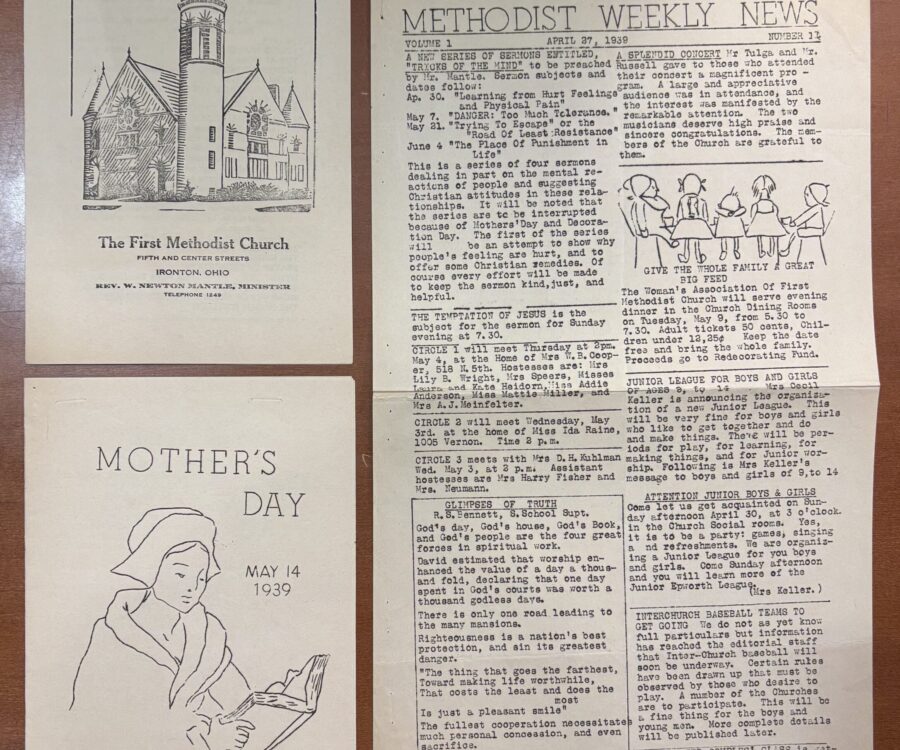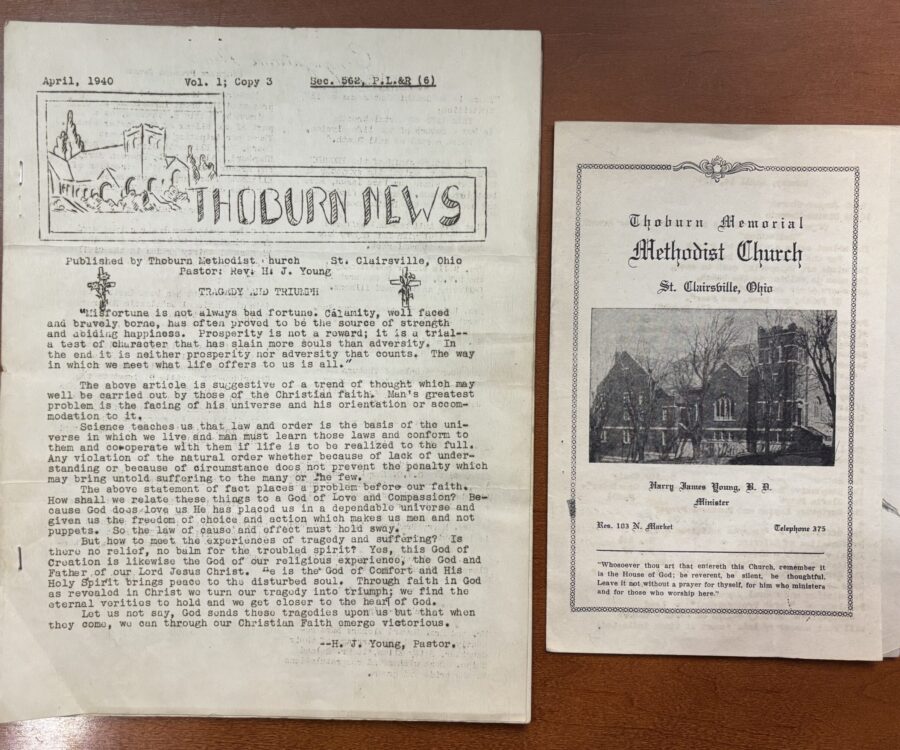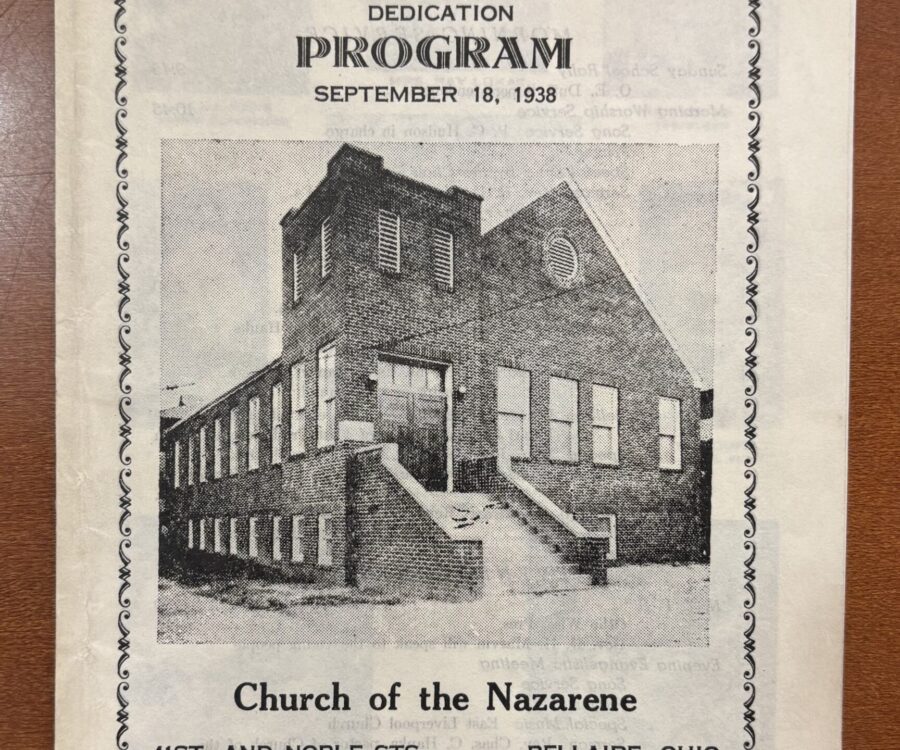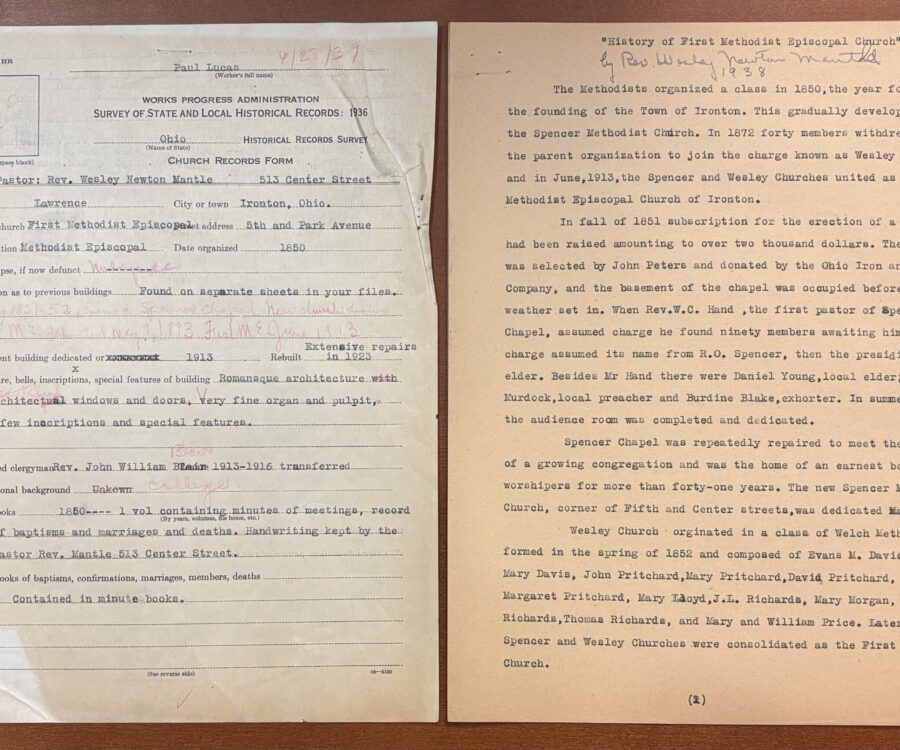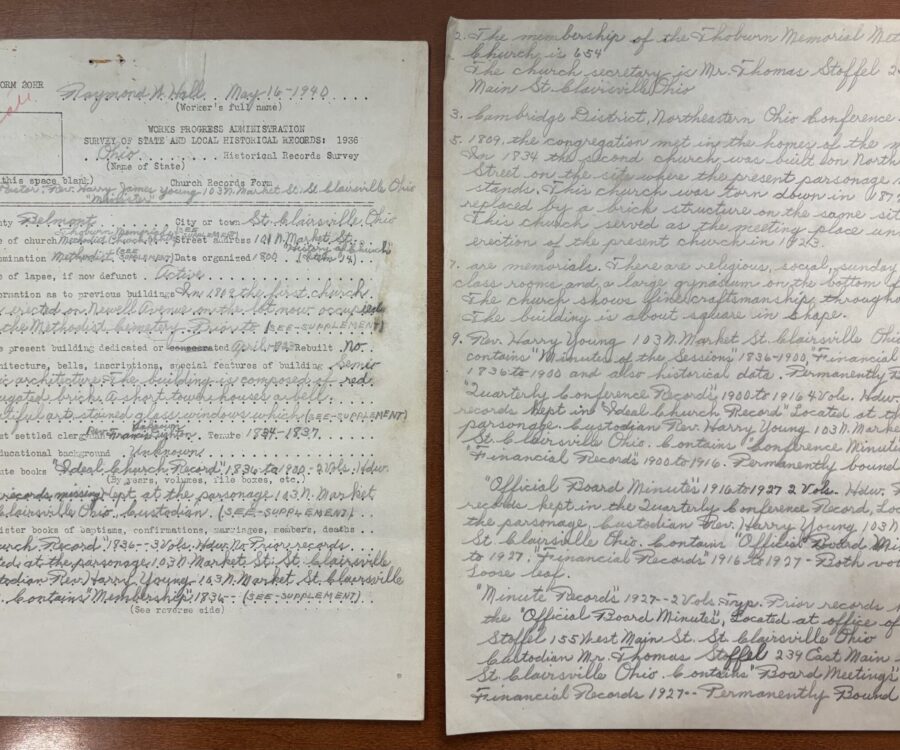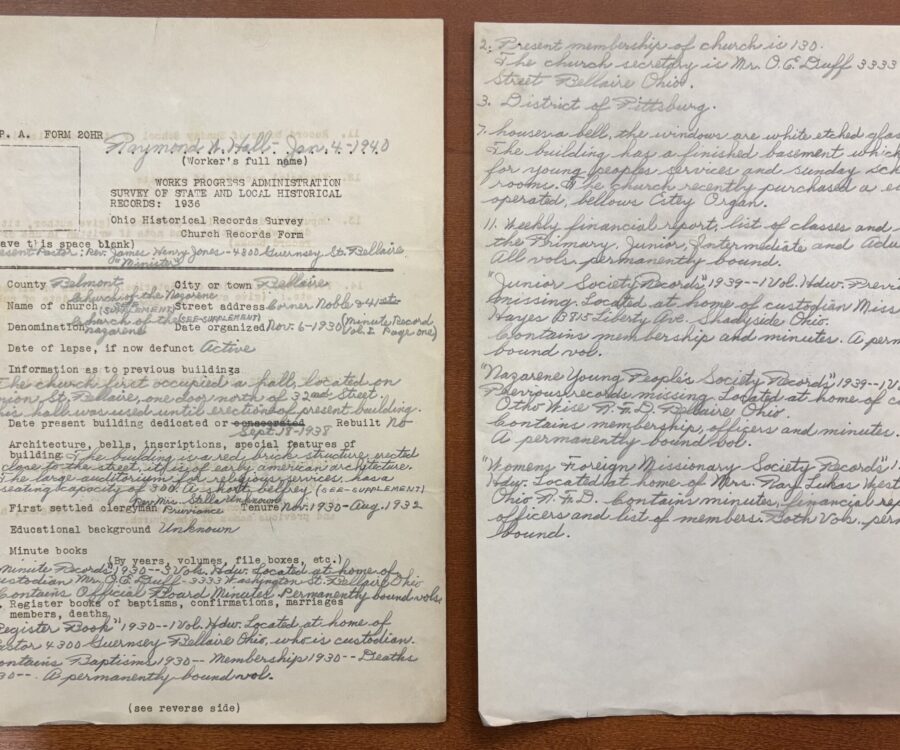By Anne Scarberry, English Literature, Culture, and Writing ’26, Fall 2025 Manuscripts Intern (working with Greta Suiter, Manuscripts Archivist)
Introduction and Processing the Collection
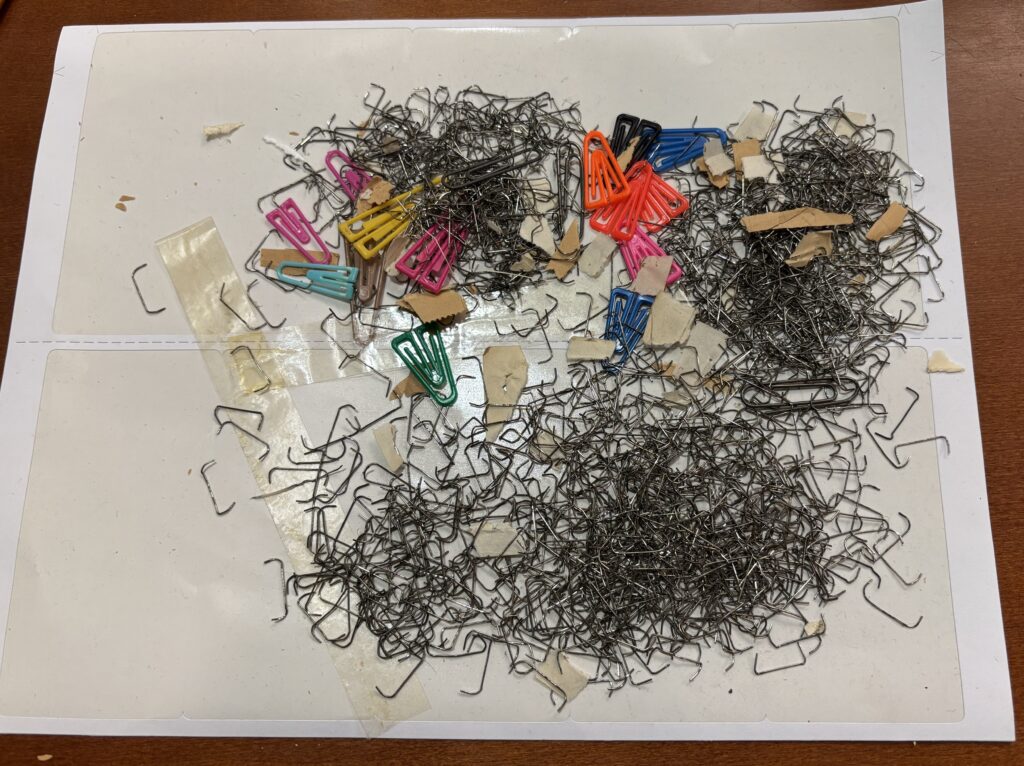
Over the past eight weeks I have had the privilege of processing series two of the Ohio Historical Records Survey collection which focuses on Churches as an intern in the Mahn Center. In the second week, I was handed a staple remover that I had no clue how to use and five boxes of manuscripts that had not been processed since the 1970s. While the process was daunting at first, I quickly fell into an easy routine as I became fully engrossed in the collection. Processing the collection included removing hundreds of staples, reorganizing and labeling folders, and putting everything into new boxes. Once the collection was more orderly, I filled out an Excel spreadsheet to document every piece in the collection. This spreadsheet was then used to create a finding aid for researchers interested in the collection.
Historical Background
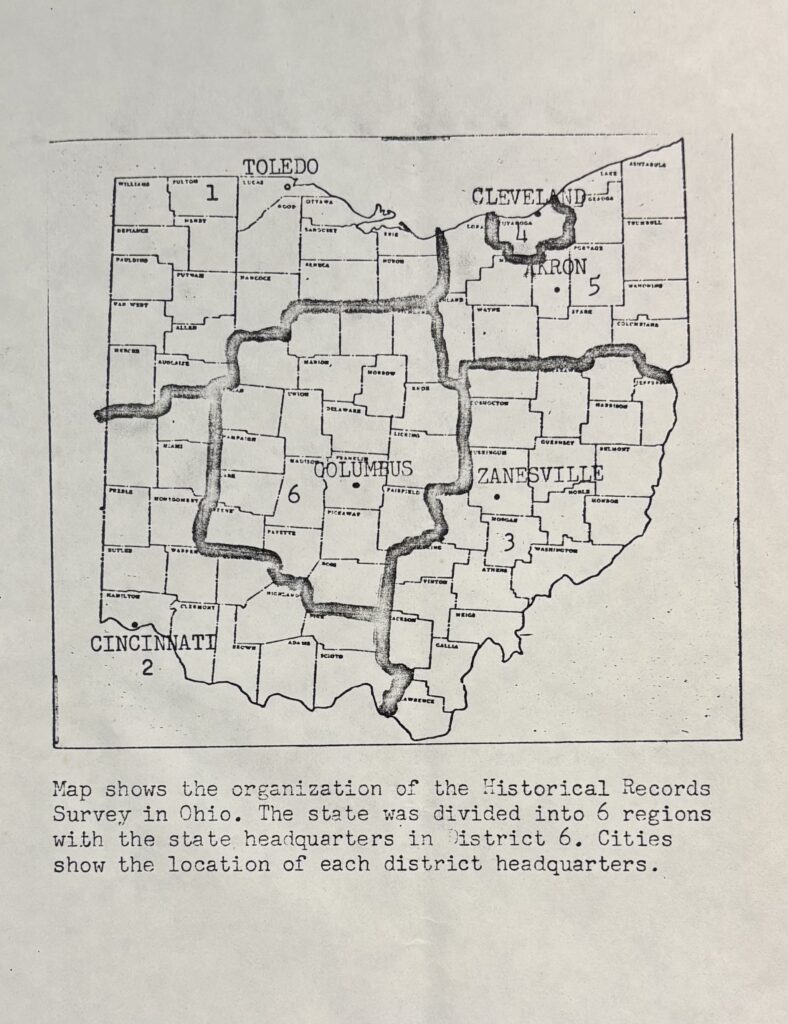
The Ohio Historical Records Survey collection is broken into two sections, or series: municipal records and church surveys. These surveys range from the late 1930s into the early 1940s and were conducted by the Works Progress Administration or WPA. In 1935, The WPA was founded by Franklin D. Roosevelt as part of his New Deal program which provided unemployed Americans with temporary work. On November 15, 1935, the Historical Records Survey was created as a branch of the WPA to task workers with documenting and surveying local records and churches. The Historical Records Survey divided the state of Ohio into 6 distinct districts, with District 3 covering Southeastern Ohio. The following counties were included in District 3: Athens, Belmont, Carroll, Coshocton, Gallia, Guernsey, Harrison, Hocking, Holmes, Jackson, Lawrence, Meigs, Monroe, Morgan, Muskingum, Noble, Perry, Tuscarawas, Vinton, and Washington. The Mahn Center for Archives and Special Collections at Ohio University houses duplicate copies of the surveys conducted in District 3.
As one can imagine, there were hundreds of churches across these 20 Ohio counties during the 1930s and 1940s. In total, I spent six weeks leafing through five boxes piece by piece. The collection contains not only individual surveys, but also numerous supplementary pieces. These supplementary pieces included church lists, church pamphlets, event programs, newspaper clippings, minute books, and lengthy notes on the churches.
Interesting Finds
In a collection as large as this, there are bound to be interesting finds that stick out or provide a thought-provoking glimpse into the churches of Ohio. Half the fun of processing the collection was searching the names of churches and researching what they are like now. It was particularly fun to challenge myself and see if I could find now defunct and abandoned churches through the information on the survey and Google Maps.
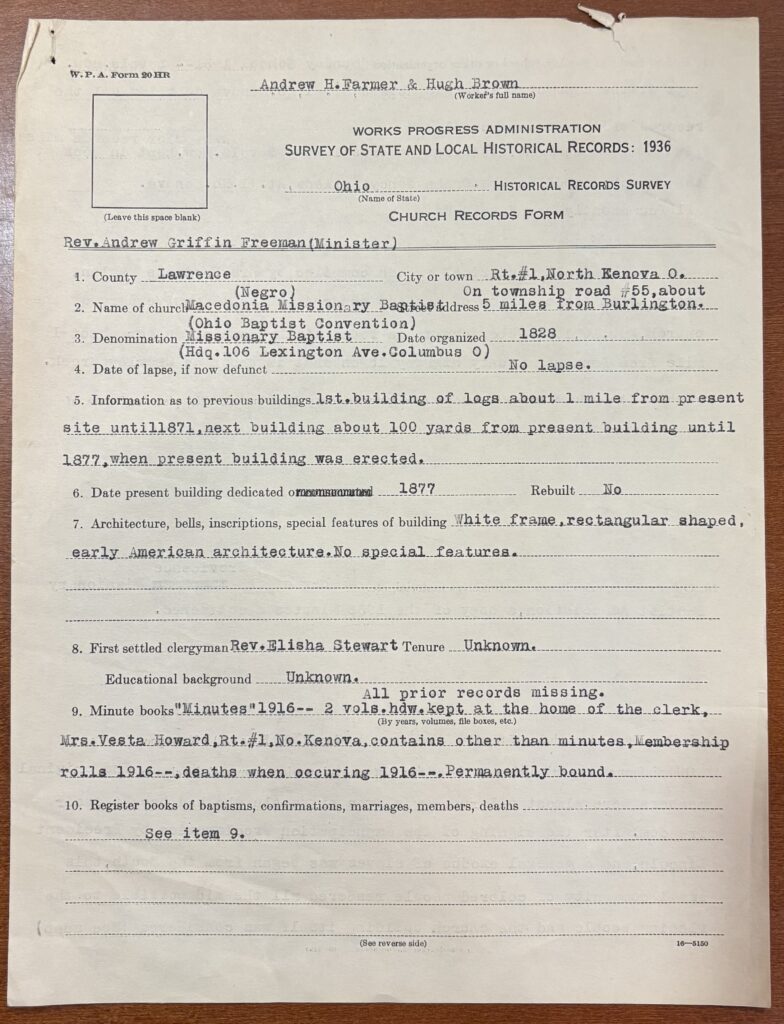
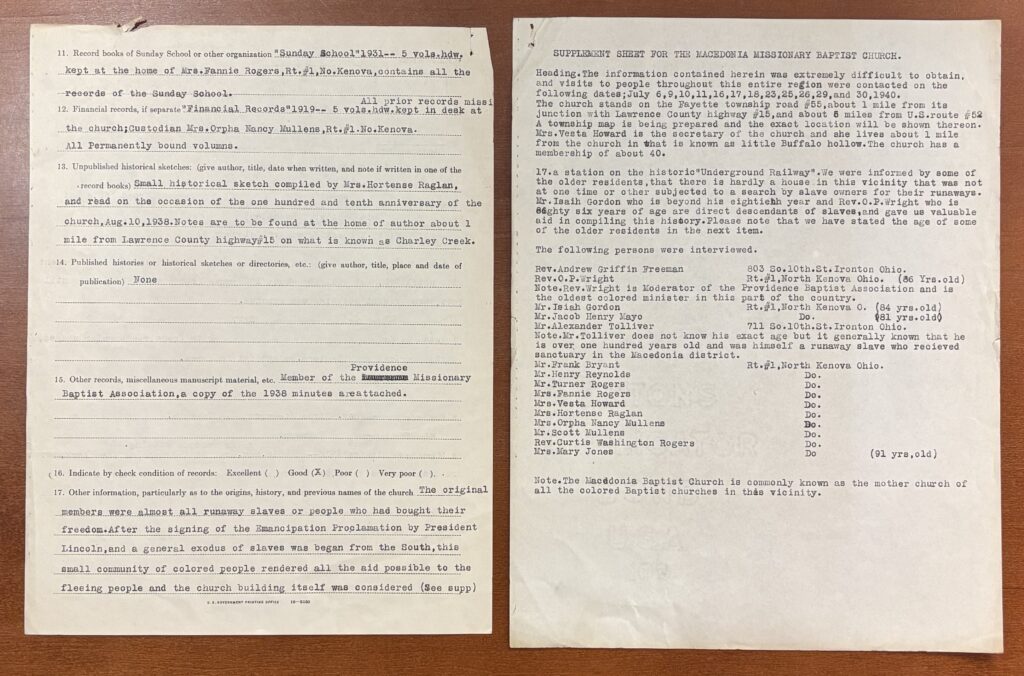
Macedonia Missionary Baptist Church in Burlington, Ohio
My favorite piece from the collection was the survey done on the Macedonia Missionary Baptist Church in Burlington, Ohio. The supplementary sheet for this church said that it had been a part of the Underground Railroad, and that the survey had taken over a month to complete across two workers. So, I did a quick Google search to learn more. This church is now defunct and abandoned, but it is listed as an Ohio Historical Site. According to AppalachianOhio.org, it was the first Black church west of the Appalachian Mountains, the first Black church in Ohio, and the last Black church from the Antebellum era still standing in Ohio. Unfortunately, due to lack of funding and severe structural damage, the church is now listed as one of Ohio’s Most Endangered Historical Sites and is at risk of being torn down. I found the church on Google Maps, and it is thankfully still standing as of November 2024.
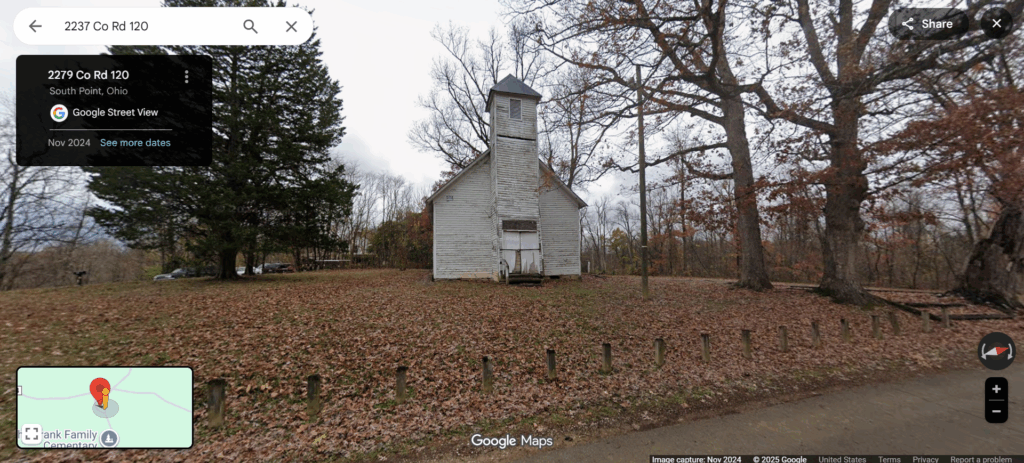
St. Mary’s Catholic Church
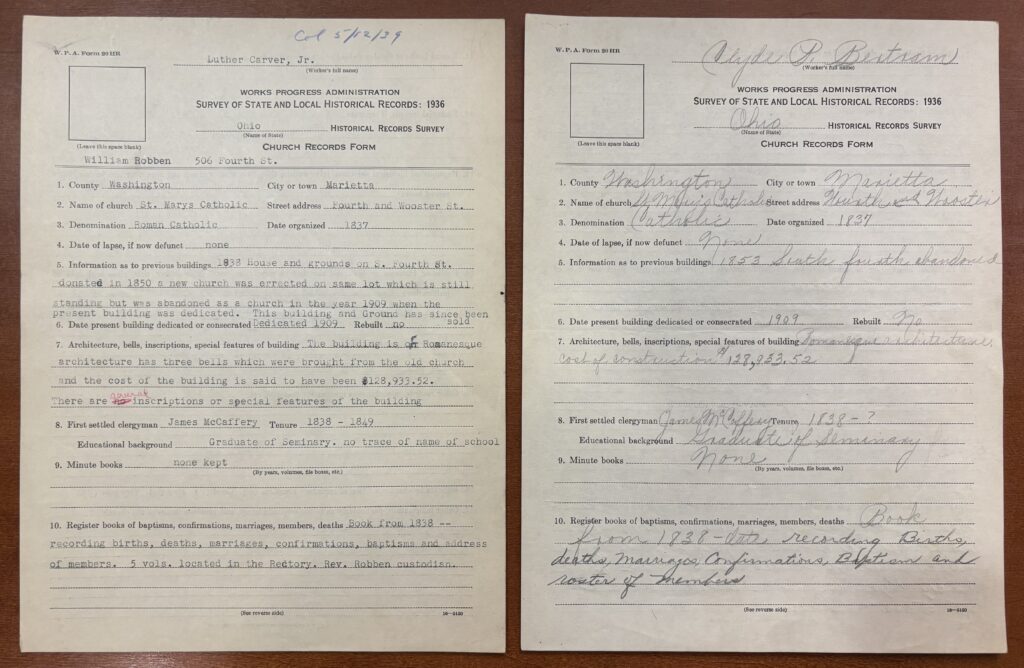
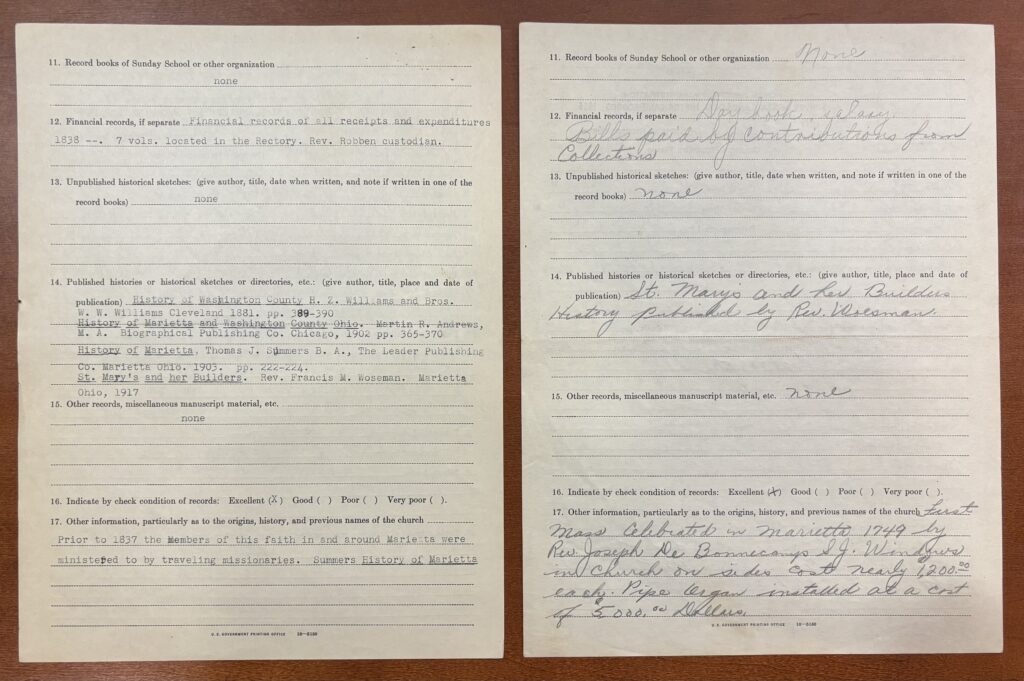
St. Mary’s Catholic Church is another favorite piece of mine in the collection. Located in Marietta, Ohio and organized in 1837, St. Mary’s is one of the oldest Catholic churches in the state of Ohio. However, the name of the church has been changed since the survey was conducted on May 12, 1939. On June 13, 2013, Pope Francis declared this church a minor basilica for the parish’s historical and architectural significance, and the name was changed to the Basilica of St. Mary of the Assumption. A Basilica is a high honor granted by the Pope to churches deemed of significance. This honor grants them special privilege and marks them as a place of spiritual importance to the Catholic Faith.
Antioch Christian Church
Another interesting piece in the collection is the floor plan of the Antioch Christian Church or “The Church on the Hill” in Antioch, Ohio. This floor plan sticks out in the collection for three important reasons. Firstly, in the entire collection, this is the only floor plan of a church included, and secondly, it is hand drawn by the surveyor. But most interestingly, this is a floor plan of a church that no longer exists. I could not find any information about this church during my research and the survey lacked a specific street address to search for on Google Maps. After numerous failed explorations of Antioch, Ohio on Google Maps street view, I’ve been left to assume that the church is now defunct and that the building has been torn down.
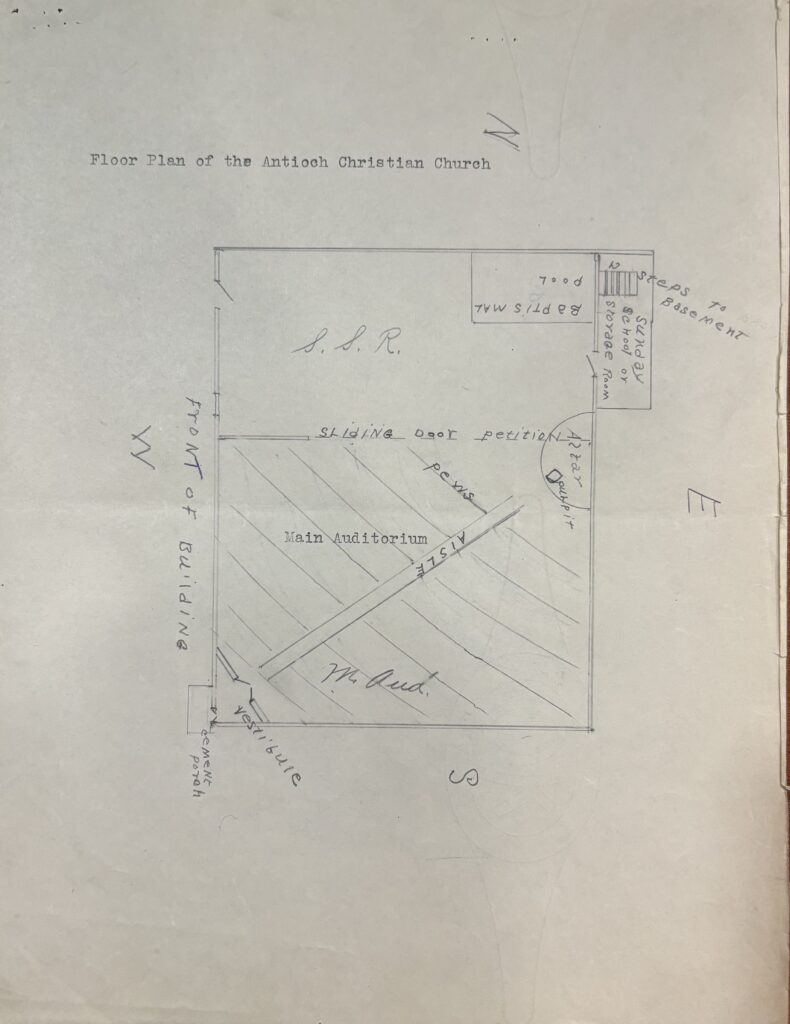
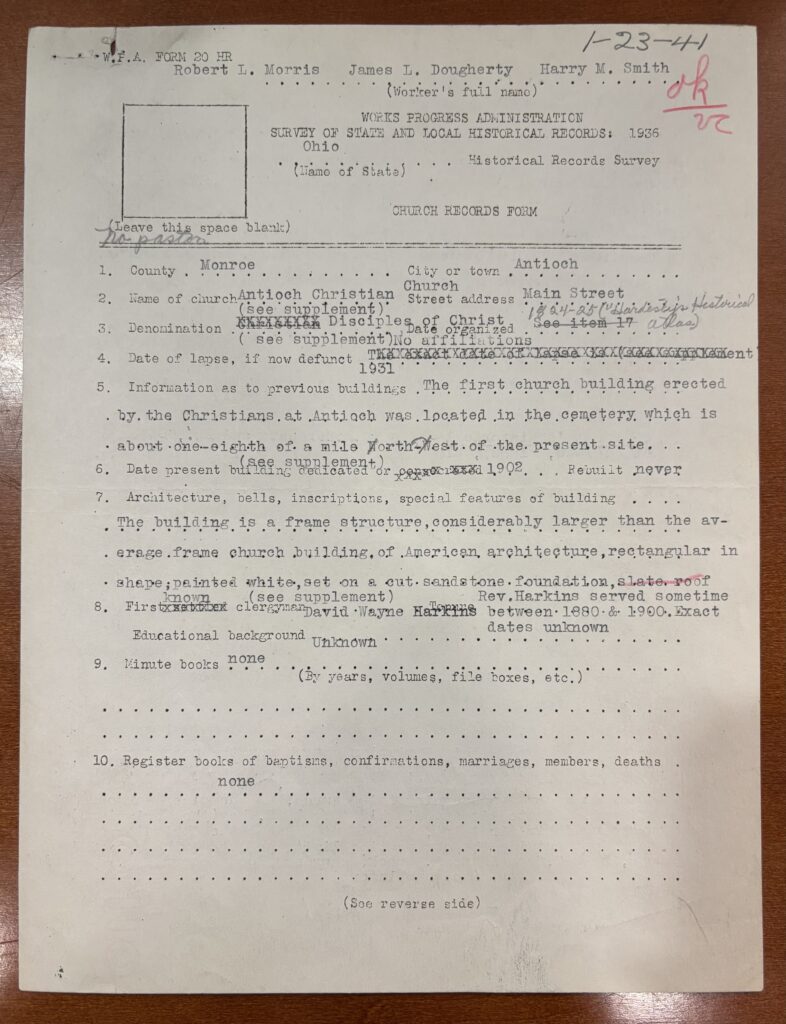
Newspaper Clippings, Maps, and Programs
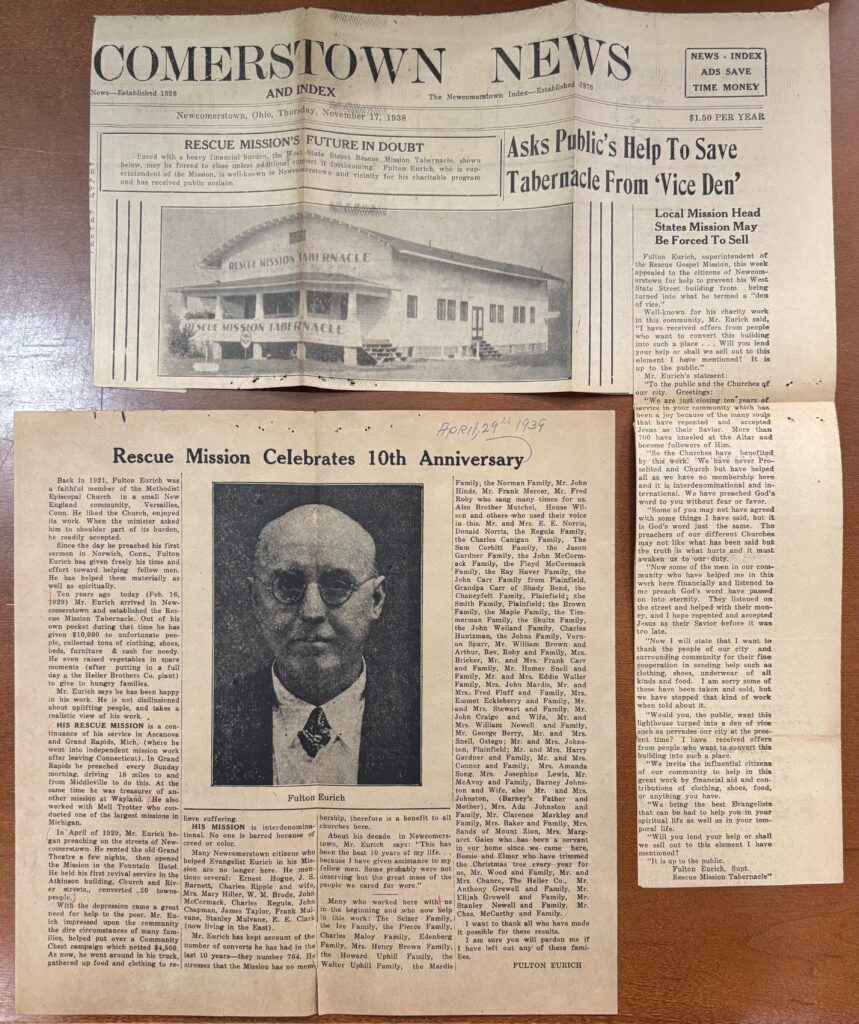
In a collection primarily filled with surveys and notes, newspaper clippings and other additional pieces tend to stick out. So, I was excited to find not one but two newspaper clippings for one of the churches. The Rescue Mission Tabernacle Church in Newcomerstown, Ohio had an article featured on the front page of the Newcomerstown News and Index on November 17, 1938. The article asks the public for help funding the church so that they will not be forced to sell the building. After reading the article, I turned to Google to find out what happened to the church. As of now, the building is still standing but is now the Cornerstone-North Full Gospel Church. However, I am unsure if the two churches have any relation. The second clipping does not list where the paper came from, but the paper is dated April 29, 1939. The clipping discusses the life of the church’s Pastor, Fulbert Urich, and his contributions at length for the church’s 10th anniversary.
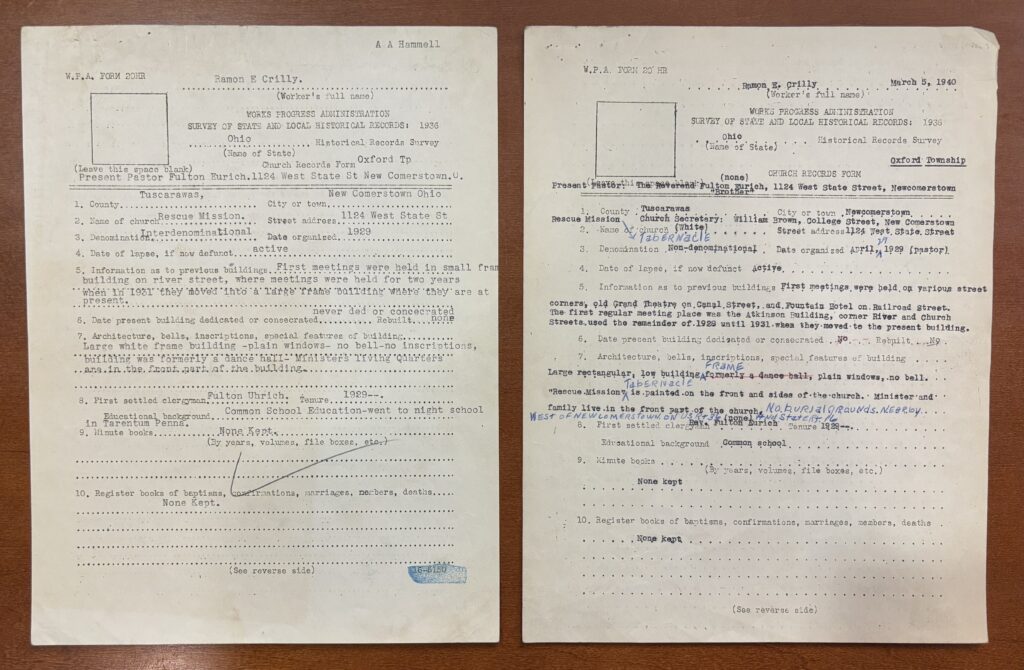
Other pieces that stick out amongst the surveys are maps, particularly hand drawn ones. The maps depict Perry Township, Hamilton Township, Fayette Township, and Elizabeth Township with impressive detail and accuracy. For the churches of Southeastern Ohio that lack street numbers or are labeled with ambiguous locations on the surveys, the maps provide a very easy way to pinpoint their locations.
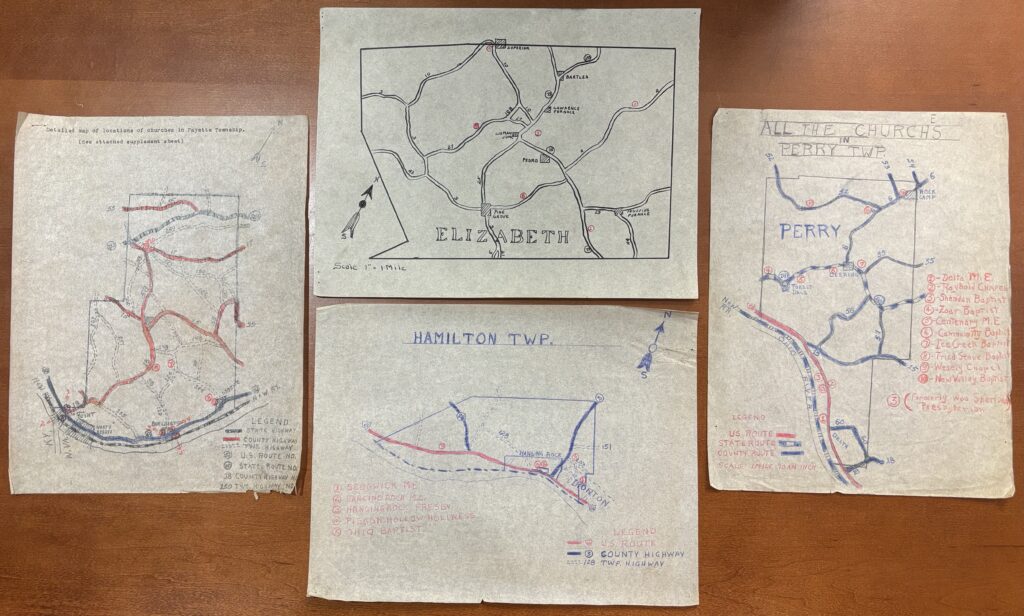
Throughout the collection, there are programs, bulletins, and journals from the surveyed churches. One of my favorite programs is from a Mother’s Day service at the First Methodist Church of Ironton, Ohio because it is full of poetry written by members of the church. These pieces provide an interesting look into what was going on in a church at the time the survey was completed, such as events that were held, lists of members, and mass schedules. These pieces are also important because they often contain photos or drawings of the churches from the 1930s and 1940s.
Moving Forward
Processing the Ohio Historical Records Survey on churches was overall an enriching and satisfying experience. It provided me the chance to engage in a niche topic that I am interested in and work with the collection in a meaningful way to provide an organized collection for future researchers. Collections like this provide us with pieces of history that are otherwise inaccessible, such as floor plans of torn down churches, photos of churches from the 1930s and 1940s, surveys about defunct churches, narratives from the surveyors themselves, and church histories that otherwise may not have been documented. This experience was a perfect way for me to become familiar with the processing and handling of manuscripts in an archival setting, which I will be able to utilize throughout the rest of my experience as an intern at the Mahn Center and my future. I’m incredibly grateful to the Mahn Center for providing me with this opportunity and I will cherish this experience forever.
